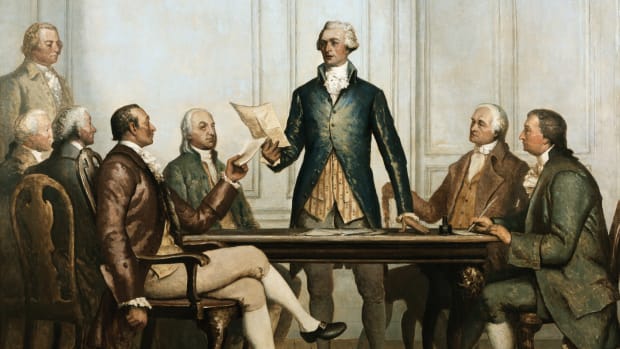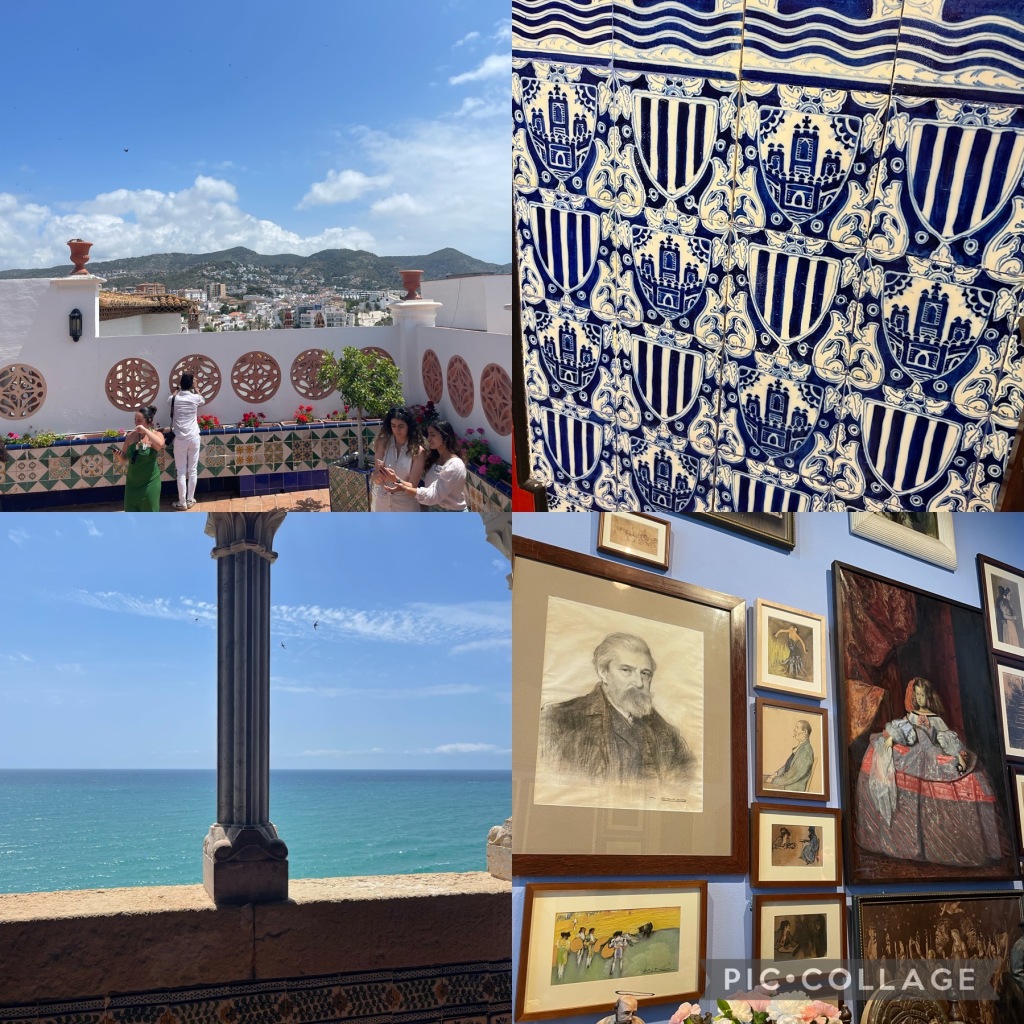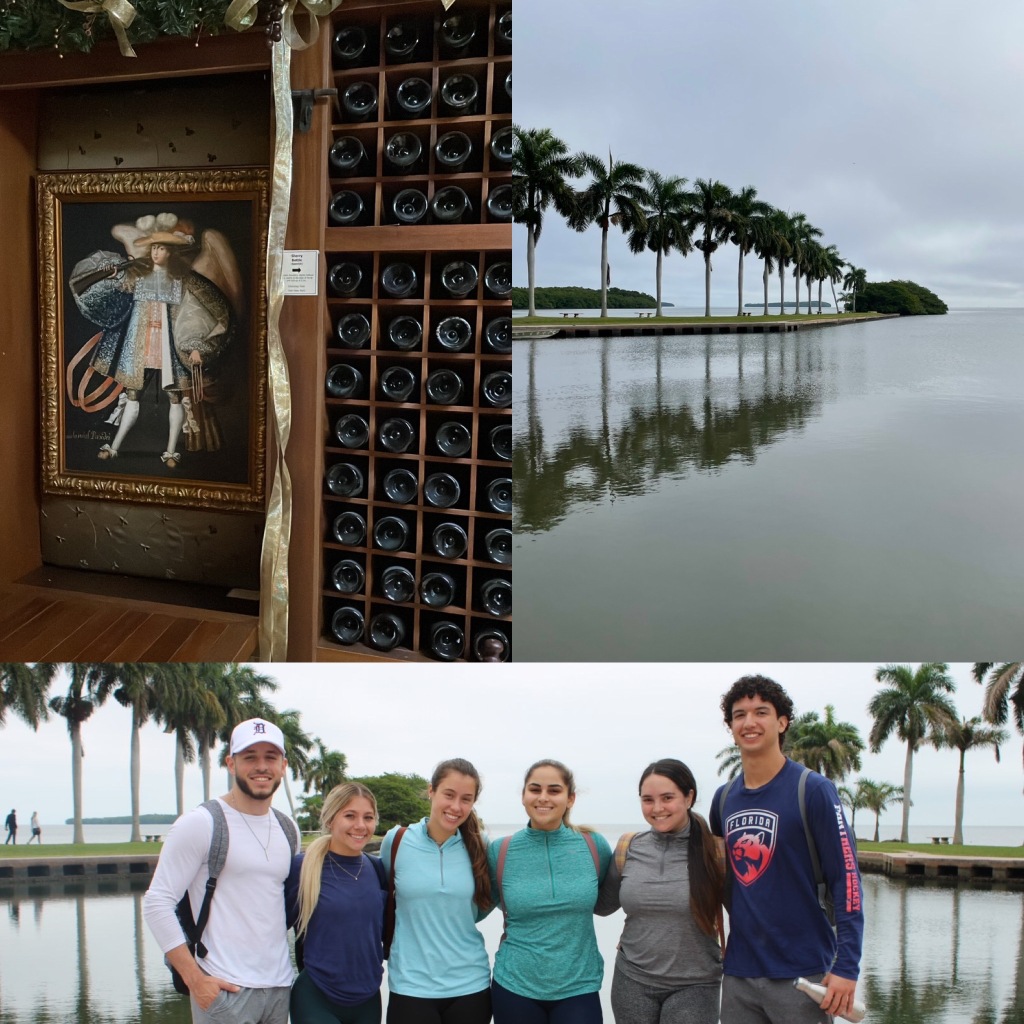
Destiny Jayda is a sophomore at Florida International University studying International Business to receive a Bachelor’s in Business Administration. Her passions are dancing and singing. When she’s not in practice or studying, you can find her spending time with her family or somewhere near the ocean.
“I Am Not Spanish”
by Destiny Jayda of FIU on July 17,2022.

Introduction
The culture, customs, and lifestyle are extremely different in Europe in comparison to the Americas. Before my trip I was expecting to find myself in a new world, one that was completely foreign and would make me feel out of place. In physically travelling to the country, I found the exact opposite of my expectations. I found myself connecting every little thing to home. Making connections between their culture and mine, their cities and mine, their structures and mine. And at the end of it all, I came to one conclusion. Humans are much more similar than we are different.

Cultural Connection
In the year 1492, Christopher Columbus got his voyage to the West Indies approved by Queen Isabella in the Real Alcazar de Segovia. In trying to find the West Indies, I would say he failed. However, he managed to have great success. He found what would be known as the New World, and 6-centuries later as my home. When he returned to Spain, Columbus presented his findings of the new land and the people who inhabited it in Barcelona. The more in depth the class got with the history and culture of Spain, the more I realized how much influence they had on Miami and its people. Later, in 1566, Miami would be claimed for Spain by an explorer named Pedro Menendez de Aviles. From then forward, Miami will never cease to have Spanish influence.
Miami’s population is 70% latino. Of that large percentage, most of them are Cuban. Spain conquered Cuba as their territory and had power there for nearly 400 years. Many of the customs and foods seen in the Cuban culture were directly derived from the Spanish. Of course, the most obvious is the language. Events in history would have thousands of Cubans end up in Miami in the mid 20th century, bringing their customs and cuisine with them. While in Spain, I found myself very familiarized with items I read on a menu. They were called words I had never seen before, but the ingredients always gave away their similarities. So, I would order whatever I thought sounded best, and every time the result would humor me. It was always something that at home I eat very often, and it just had a different name. There were plenty of recipes that had one or two differences from the way my grandma would make them at home. There were so many moments at restaurants where I realized how much my life has been influenced by the Spanish. Take something as simple as the pan con tomate for example. In my family, we grew up on pan con tomate as a snack throughout the day, and I always wondered “What made my grandma know think that bread and tomato would be a good combination?” but never would I have thought that it is a dish from Spain that has been carried through generations. Then there comes a moment where I am sitting in Spain and suddenly there is bread and tomato on the table, and it is referred to as a “tapa.” Those moments made it seem as if I never left the 4 walls of my house.
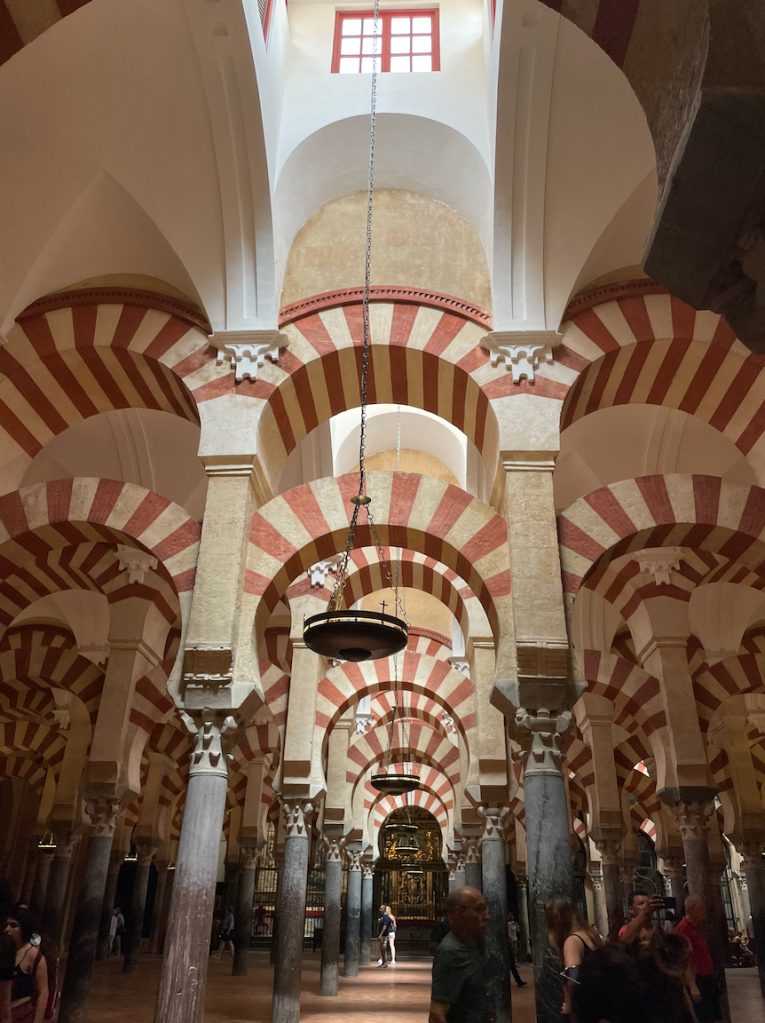
Religion
Never would I have thought that my biggest take away from a country that I dreamed of visiting would be religion. Being a Cuban American from Miami, one thing I can say differs in the culture, is that most of us are not as connected to our religion as they are in Spain. We might identify with a religion and claim to be it, but our practices are not strong. Not only do we not have a strong foundation of our own religions, but we definitely are also not told much about other ones. During this trip my views on many religions, including my own, were altered. Spain is very heavily influenced by religion. For centuries the most practiced religion has been Catholicism, and it is very rare to see any others within the borders. This was not always the case though. The history of Spain, although one of much discovery and exploration, was not one of tolerance or open-mindedness. During the same time of the new conquests, the Catholic monarchs (Queen Isabella and King Ferdinand), focused exclusively on removing any other religions from the country. There was a lot of controversy between different regions of Spain as some of them were ran by sultans and inhabited by many Muslims and Jews. Granada was one of the cities that had strong Islamic foundation. The people fought for months to keep their land from being taken over by the Christians. King Boabdil surrendered Granada to the Spanish crown in 1492, his emotions ran high as he knew what would come next. His mother said to him “You cry like a woman for what you did not defend as a man.” The beauty of his religion within this region would be destroyed. In this city is where the great structure of The Alhambra sits. Till this day it is one of the best-preserved palaces of Islam. The further in to the La Alhambra you get, the more examples of incredible work you will find. There are beautiful sights of stonework, scriptures, beautiful ceilings, and many ties to the Islam religion. Once the monarchs had control of such a monumental city, it was only a matter of time before the crown ordered all Muslims and Jews converted to Christianity or flee the country. Not only did they succeed, but they proceeded to find ways to put Christianity above the other religions.
Present day Spain is full of beautiful cathedrals that had a lot of time and money invested into them. There was a time when any new cathedral being built was meant to be grander than the last to get closer and closer to God and show Him his importance. This devotion to a higher being is something that could have been so admirable and respected, however in my opinion it was poorly executed. To show God how much they loved and appreciated him they chose to change, remove, or kill other humans. Others of his followers, his creations. Which led many non-Catholic Spaniards to Cuba. Many of the citizens expelled from Spain or running from the fate of the Inquisition went on to settle in Cuba, but most of them would keep their religion a secret for generations to come. It was hard to digest what Christianity did to believers of other religions. The hardest part was to understand how most of the killings of the Spanish Inquisition were not even officially documented. In Sevilla, there were 4,000 Jews executed in the Jewish quarter, all of which were unofficial deaths that do not get counted toward the number of murders committed during the Inquisition.
Different cities in Spain brought me closer to or farther from my religious beliefs. There were structures like La Sagrada Familia, Santa Maria de Montserrat, and La Catedral de Segovia, that felt like beautiful and pure examples of Christianity. Contrary to those, there was also the Mosque-Cathedral of Cordoba and La Alhambra that were both conquered around the same time. Instead of being destroyed to build something purely Catholic on the same grounds, the religion decided to keep the Islamic structures preserved because they knew how beautiful and rare, they were. Instead of having respect and putting those sites to rest, they built over it and added Christianity everywhere. They put a crucifixion and countless monuments of Virgin Mary in the very center of one of the greatest mosques in the world. In some ways, I am grateful the work was preserved and now hundreds of years later, I could go there and see it. However, morally it just felt wrong. I could not stop myself from feeling greatly uncomfortable. It would be great to say that after a trip to Spain, I felt so much closer to Catholicism, but it would be dishonest.
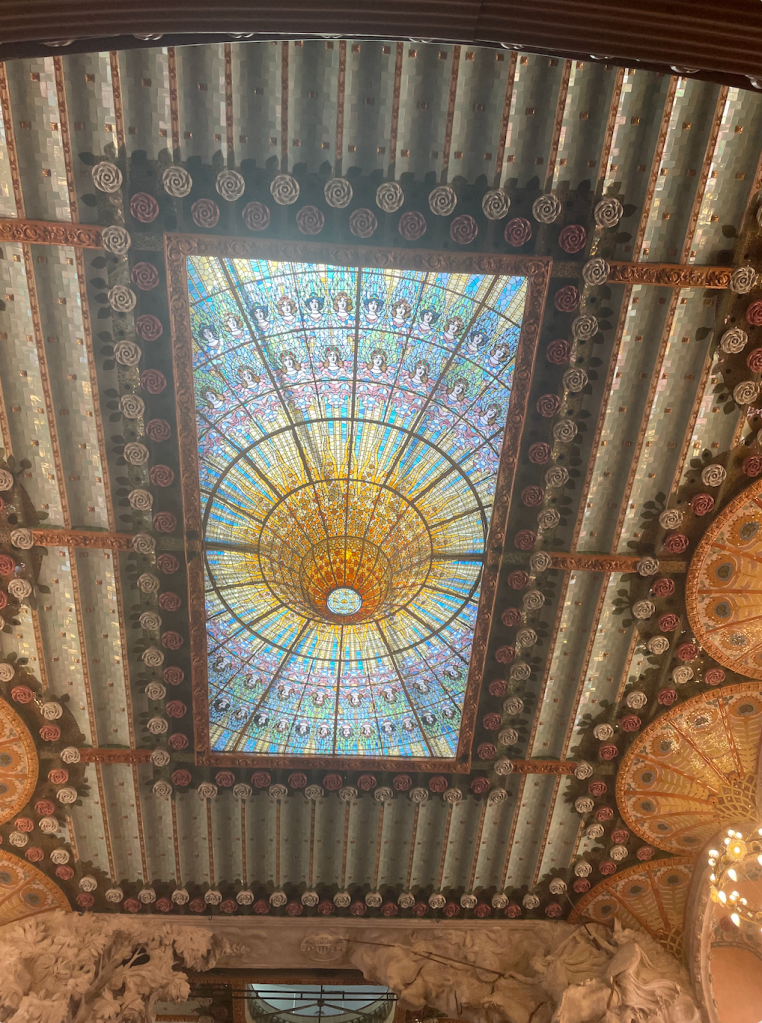
Manifestations
Learning about the development of cities in Spain made me realize how Miami has a similar background. Madrid is a young city in comparison to the rest of Spain. It was only made the capital because King Phillip II moved the court to the city. A whole generation later, it would be named the capital of the country. Madrid was very underdeveloped until King Carlos III introduced streetlights and a sewage system. Now, it is home to one of the most important sites in all of Spain, the Palacio Real. This is the palace in which royal families lived for many generations. The palace is in a neighborhood called Austrias within the city of Madrid. These parts of town are almost identical to Vizcaya in Miami, owned by James Deering. King Felipe had the palace built to be the most luxurious palace in all of Europe, in a city with no strong history to contribute to the country. James Deering did something similar in Miami. He had Vizcaya built to be a luxurious place in a city that did not mean much to the United States. In El Born, you come across this beautiful garden. The Sabatini Gardens were opened to the public by King Juan Carlos I in the year 1978. These gardens are full of historical figures and amazing views. There are monuments of many of Spain’s kings and queens. This is something I think Miami lacks. As a Miamian, I was not taught anything about my city’s past while in school. I found myself very uninformed of my geographic history just until this year. Which is why, in a country as historically important as Spain, I appreciate how much energy is put toward preserving their history and believe that Miami could execute similar efforts to inform us more of ours.
It’s silly to say but what inspired my desire to visit Barcelona was the movie “The Cheetah Girls.” I dreamt of living a similar reality to them, and minus the performing, I really got to do it. One of the most famous scenes of the movie was shot in the Park Güell, one of the many places in Barcelona I got to see. As a child, watching that movie made me think Barcelona was special because of the views, the mountains and beaches, the beautiful houses, but witnessing the city with my own eyes changed that perspective completely. Barcelona is a very powerful city. One whose people don’t even identify with the nation they live in. If you ask someone from Barcelona if they are Spanish, they would not only be insulted but they would respond that they are not. The people of Barcelona consider themselves Catalan, as the city is the capital of Catalonia. What makes this city special is not its views or anything superficial about it, but instead the undying desire of wanting to be known as something more than just “a city in Spain.” In Barcelona is where the creation of “modernism” took place. A few architects put together what would become the city’s staple. Modernisme is a style of architecture that connects nature motifs with industrial materials. The style began only in the early 1900s when architects decided that modernisme was going to be the Catalonian trademark. The purpose of creating this style was to give Barcelona a regional identity, something that made it different from the rest of Spain. Not only did they succeed in the creation, but it was also a global hit. People from all over the world travel to Barcelona to see for themselves the modernisme architectural style throughout the city. In El Raval, a neighborhood in Barcelona, there is a wonderful example of this style. El Palau de Musica is a concert venue that was built only in 1908. There are stainless steel glass windows that represent the sun, roses made of ceramics, a grand organ, and many more details that make up the interior of this building. When in Barcelona, it is a must to visit this structure as well as the Sagrada Familia and Park Güell.

So, Am I Spanish?
Every place in the world has something that makes it special and different. What I had not considered was how those specialties would be reflected in their people. As much as people are similar in the sense of wanting somewhere to belong, needing social interactions, and craving love and acceptance, where we are raised contributes a big part to our characters. On this trip I realized how much being from Miami, has shaped a big part of me and helped me become the woman I am today. I also have realized how much Miami was shaped by Spain. Our environments and surroundings cater to the way we perceive the world. Spain has heavily contributed to not just the Miami culture, but also the Cuban culture as well, making a very big part of me Spanish. But I am not Spanish, I am a Cuban American that was born and raised in Miami.
References
Admin. “Carlos III: A Revolutionary King.” The Making of Madrid, 15 Sept. 2021, https://themakingofmadrid.com/2018/01/03/carlos-iii-revolutionary-king/.
History.com Editors. “Alhambra.” History.com, A&E Television Networks, 12 Mar. 2018, https://www.history.com/topics/landmarks/alhambra.
“Madrid.” Encyclopædia Britannica, Encyclopædia Britannica, Inc., https://www.britannica.com/place/Madrid.
“Miami, Florida Population 2022.” Miami, Florida Population 2022 (Demographics, Maps, Graphs), https://worldpopulationreview.com/us-cities/miami-fl-population.
“Modernisme or Catalan Art Nouveau • Modernista Architecture in Barcelona.” Barcelona Life, 5 June 2018, https://www.barcelona-life.com/barcelona/modernisme.
Pier. “Spanish Culture.” Cultural Atlas, https://culturalatlas.sbs.com.au/spanish-culture/spanish-culture-religion.



